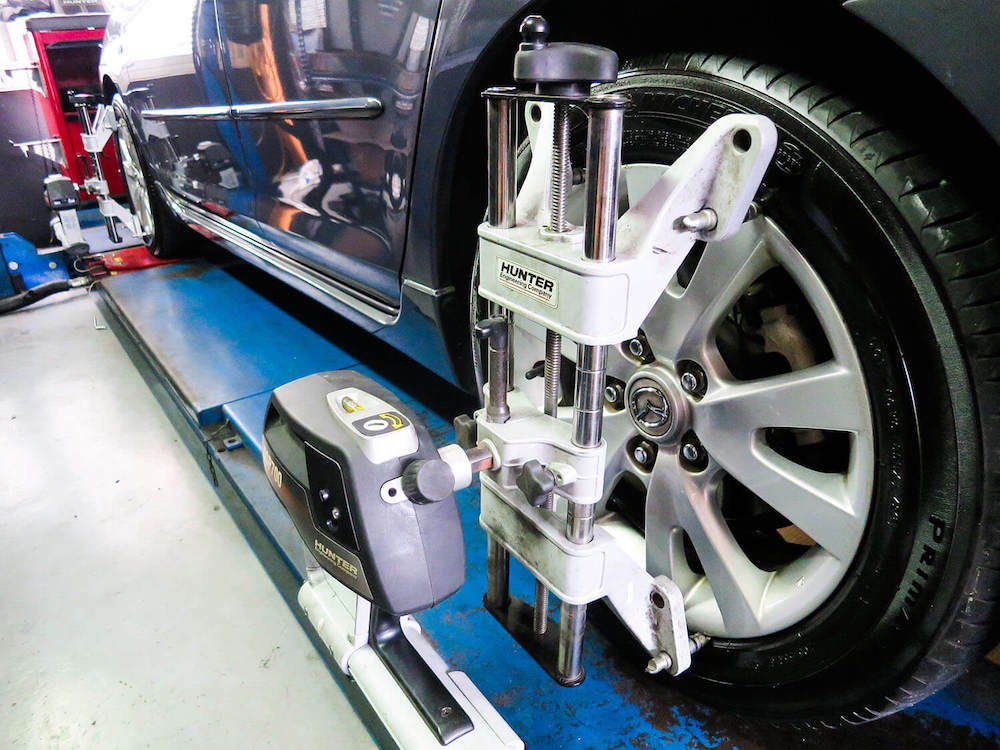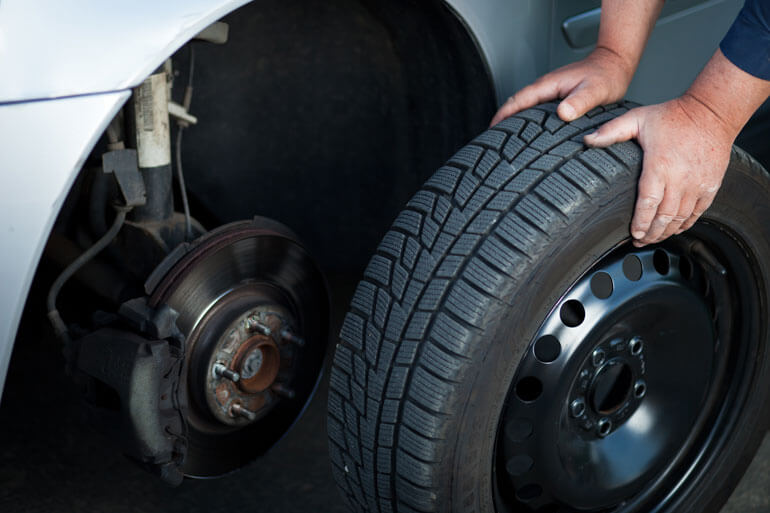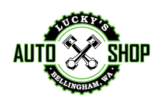Bellingham Wheel Alignment Service
Regular wheel alignments are an important service. Properly aligned wheels improve driver safety, enhance your driving control, increases fuel efficiency and maximizes the life of your tires. Our Bellingham service provides proper alignment and gives you better control of your vehicle at higher speeds and can provide a more comfortable ride. It also prevents front or rear suspension parts from wearing out prematurely.

Current vehicle suspensions are a lot more sophisticated than years ago. Most vehicle suspensions today require front and rear alignment as well as a Steering Angle Sensor re-calibration. When the alignment procedure is complete the Steering Angle Sensor (SAS) has to be reset or re-calibrated as per OEM requirements. This is done as a separate procedure with a scan tool. These sensors have been in use on certain vehicles since the early 1990’s, but became commonplace by 1998. Steering Angle Sensors (SAS) monitor the driver’s input by continuously measuring the position and turning rate of the steering wheel and reporting the information to the vehicle on-board systems.
The SAS works within a network of sensors that track wheel speed, lateral forces, vehicle roll and other variables. These measurements, along with the steering data provided by the SAS, are used to control various driver-assist systems such as Electronic Stability Control, Electric Power Steering and Active Steering. Each of these systems depends on “knowing” the driver’s intended steering direction and turning force to function as intended.
Text Luck's Today: 360-305-2278

More Than Just A Simple “Alignment” Or “Wheel Alignment”
While it’s often referred to simply as an “alignment” or “wheel alignment,” it’s really complex suspension angles that are being measured and a variety of suspension components that are being adjusted. This makes an alignment an important suspension-tuning tool that greatly influences the operation of the vehicle’s tires.
There are different recommendations for how frequent you should have a wheel alignment, although most manufacturers recommend getting an alignment once a year. An alignment should be performed when any of the following occur:
- When your vehicle pulls or drifts to one side
- When you have unusual or uneven tire wear
- When you purchase new tires
- When you have suspension or steering parts replacedAfter a collision, accident, or hitting a large pothole or curb
Out-of-alignment conditions occur when the suspension and steering systems are not operating at their desired angles. Out-of-alignment conditions are most often caused by spring sag or suspension wear (ball joints, bushings, etc.) on an older vehicle. They can also be the result of an impact with a pothole or curb, or a change in vehicle ride height (lowered or raised) on any vehicle regardless of age.
Incorrect alignment settings will usually result in more rapid tire wear. Therefore, alignment should be checked whenever new tires or suspension components are installed, and any time unusual tire wear patterns appear. Alignment should also be checked after the vehicle has encountered a major road hazard or curb.
Front-End, Thrust Angle and Four-Wheel Alignment
The different types of alignments offered today are front-end, thrust angle, and four-wheel. During a front-end alignment, only the front axle’s angles are measured and adjusted. Front-end alignments are fine for some vehicles featuring a solid rear axle, but confirming that the front tires are positioned directly in front of the rear tires is also important.
On a solid rear axle vehicle, this requires a thrust angle alignment that allows the technician to confirm that all four wheels are “square” with each other. Thrust angle alignments also identify vehicles that would “dog track” going down the road with the rear end offset from the front. If the thrust angle isn’t zero on many solid rear axle vehicles, a trip to a frame straightening shop is required to return the rear axle to its original location.
On all vehicles with four-wheel independent suspensions, or front-wheel drive vehicles with adjustable rear suspensions, the appropriate alignment is a four-wheel alignment. This procedure “squares” the vehicle like a thrust angle alignment, and also includes measuring and adjusting the rear axle angles as well as the front.
Not all vehicles are easily adjustable or fully adjustable. Some vehicles require aftermarket kits to allow sufficient adjustment to compensate for accident damage or the change in alignment due to the installation of lowering springs.

